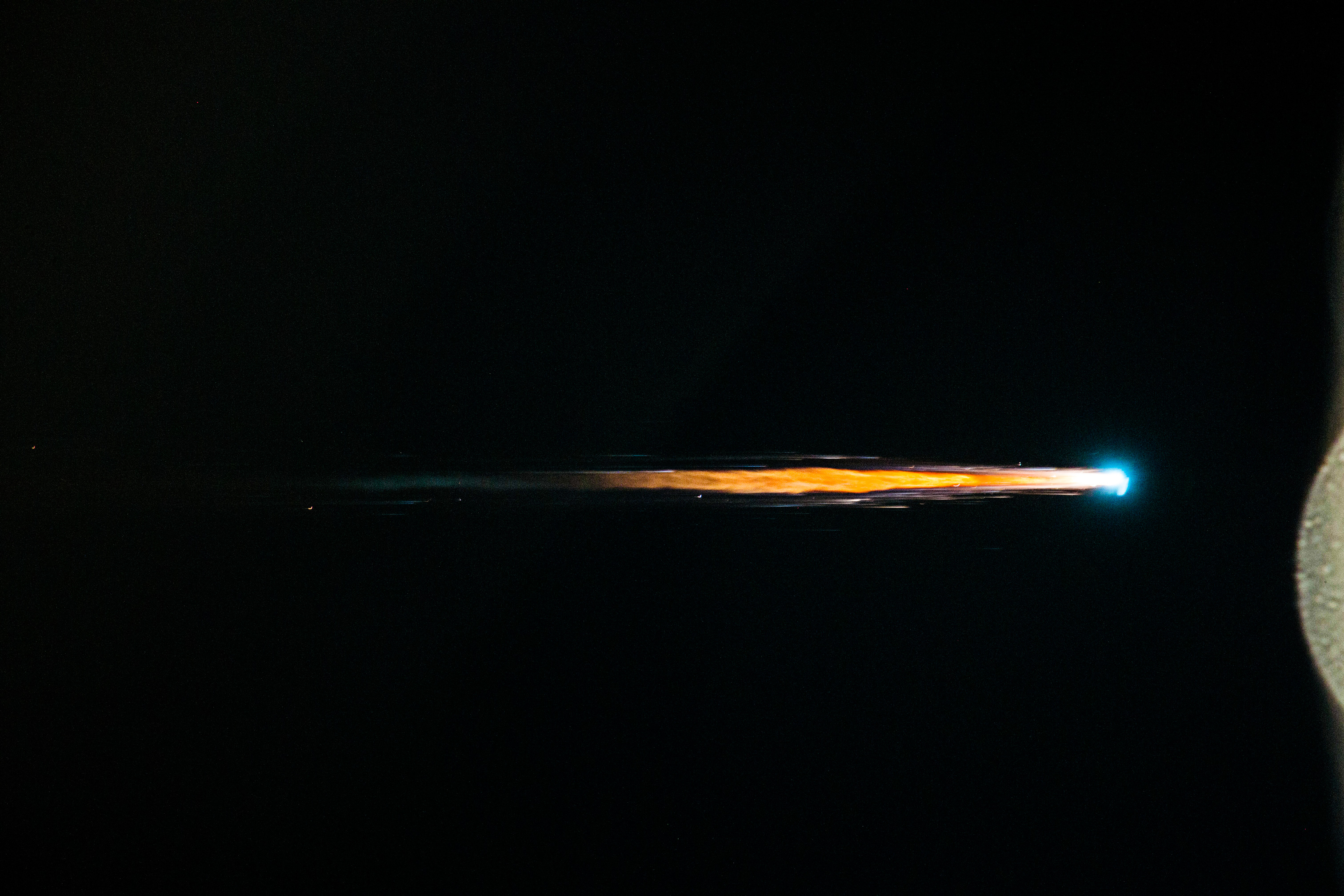Wow! Astronauts Watch Fiery Death of Space Station Cargo Ship (Photos)

A robotic spacecraft filled with waste from the International Space Station meets its fiery end in a series of newly released photos.
The amazing new images captured by an astronaut onboard the station depict the European Space Agency's fourth Automated Transfer Vehicle (ATV-4) — named the Albert Einstein — dramatically disintegrating high above an uninhabited part of the Pacific Ocean on Nov. 2.
After delivering supplies to the space station, ATV cargo ships are designed to break up in Earth's atmosphere. This one was caught in the act by a resident of the orbiting outpost, who snapped pictures of its breakup from above. [Amazing Photos: Europe’s ATV-4 Cargo Ship Burns Up in Earth’s Atmosphere]
"Each ATV mission ends with the spacecraft burning up harmlessly in the atmosphere," ESA officials wrote in an image description. "This time, however, the ATV team organized a special departure to gain valuable data on re-entries."
The Albert Einstein undocked with the space station on Oct. 28 and performed maneuvers for five days, bringing it directly below the station. The photo was taken when the robotic craft was about 62 miles (100 kilometers) below the orbiting outpost and heading into its planned dive toward destruction, ESA officials wrote.
This is the first time an ATV re-entry has been captured in an image since 2008 when the first ATV spacecraft, Jules Verne, broke apart, ESA officials said.
The Albert Einstein launched to space atop an Ariane 5 rocket in June of this year and spent about five month docked to the International Space Station. Upon its arrival, the spacecraft delivered about 7 tons of supplies including a 3D printed toolbox and some food requested by Italian crewmember Luca Parmitano.
Breaking space news, the latest updates on rocket launches, skywatching events and more!
Parmitano oversaw the unloading of the spacecraft's more than 1,400 items, ESA officials said.
After it was unpacked, the Albert Einstein was then loaded up with about 1.6 tons of space station waste before burning up in the atmosphere.
The Albert Einstein is the fourth of five planned ESA ATVs. The previous three were named after Jules Verne, Johannes Kepler and Edoardo Amaldi. The fifth, expected to launch in 2014, is named for Belgian scientist Georges Lemaître.
Parmitano and two of his fellow crewmembers will be coming back down to Earth later this week. NASA astronaut Karen Nyberg, Russian cosmonaut Fyodor Yurchikhin and Parmitano will undock their Russian Soyuz spacecraft from the space station on Sunday (Nov. 10) after spending about five months on the space station.
Follow Miriam Kramer @mirikramer and Google+. Follow us @Spacedotcom, Facebook and Google+. Original article on SPACE.com.

Miriam Kramer joined Space.com as a Staff Writer in December 2012. Since then, she has floated in weightlessness on a zero-gravity flight, felt the pull of 4-Gs in a trainer aircraft and watched rockets soar into space from Florida and Virginia. She also served as Space.com's lead space entertainment reporter, and enjoys all aspects of space news, astronomy and commercial spaceflight. Miriam has also presented space stories during live interviews with Fox News and other TV and radio outlets. She originally hails from Knoxville, Tennessee where she and her family would take trips to dark spots on the outskirts of town to watch meteor showers every year. She loves to travel and one day hopes to see the northern lights in person. Miriam is currently a space reporter with Axios, writing the Axios Space newsletter. You can follow Miriam on Twitter.
